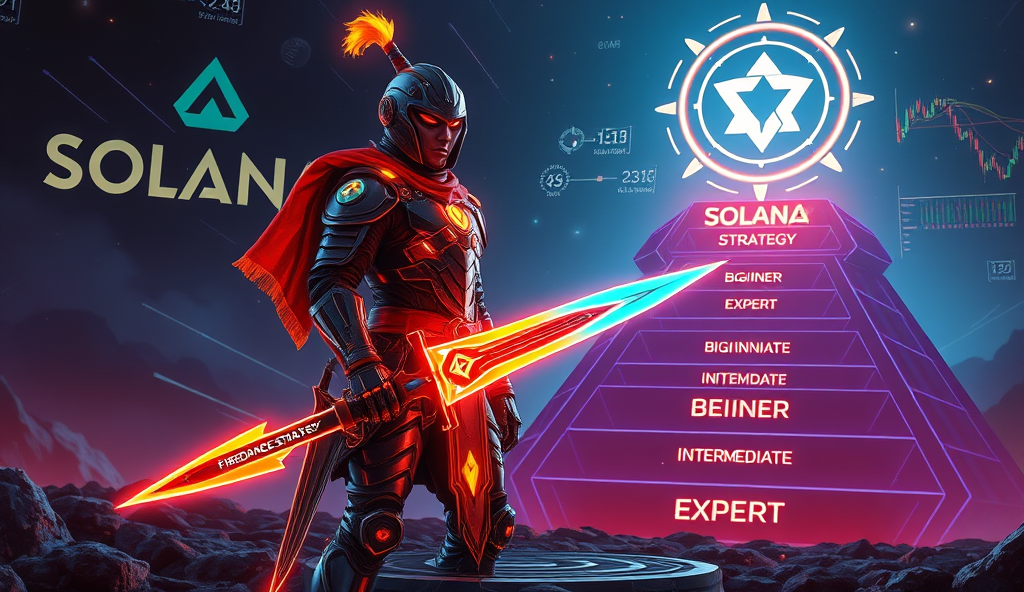Introduction to Layer 2 Scaling Solutions for Ethereum in 2023
Layer 2 scaling solutions have emerged as the most viable path to address Ethereum’s throughput limitations, with adoption growing by 300% since 2022 according to L2Beat data. These off-chain protocols, including Optimistic rollups and ZK rollups, now process over 60% of all Ethereum transactions while maintaining base-layer security guarantees.
Leading implementations like Arbitrum One and Optimism’s Bedrock upgrade demonstrate how L2 solutions can achieve 10-100x cost reductions compared to mainnet transactions. Developers are increasingly leveraging Polygon’s SDK and StarkNet’s Cairo language to build scalable dApps without compromising decentralization.
As we examine Ethereum’s scalability challenges in the next section, it’s clear that 2023 marks a turning point where L2 solutions transition from experimental to production-ready infrastructure. The ecosystem now offers mature tooling for cross-chain bridges and state channels, enabling seamless interoperability between Layer 1 and Layer 2 networks.
Key Statistics

Overview of Ethereum’s Scalability Challenges
Layer 2 scaling solutions have emerged as the most viable path to address Ethereum's throughput limitations with adoption growing by 300% since 2022 according to L2Beat data
Ethereum’s base layer struggles with throughput limitations, processing only 15-30 transactions per second compared to Visa’s 24,000 TPS, creating bottlenecks during peak demand as seen in the 2021 NFT boom. These constraints stem from Ethereum’s decentralized architecture, where every node must validate all transactions, creating inherent tradeoffs between security and scalability.
High gas fees during network congestion highlight the economic impact, with average transaction costs exceeding $50 during DeFi summer, pricing out many developers and users. While sharding was originally proposed as a scaling solution, its complexity and delayed timeline have accelerated Layer 2 adoption as evidenced by the 300% growth mentioned earlier.
The transition to proof-of-stake improved energy efficiency but didn’t fundamentally solve throughput issues, making Layer 2 solutions like Optimistic rollups and ZK rollups essential for achieving web3 scale. As we’ll explore next, these technologies employ distinct approaches to overcome Ethereum’s scalability challenges while preserving its security model.
Key Layer 2 Scaling Technologies in 2023
Ethereum's base layer struggles with throughput limitations processing only 15-30 transactions per second compared to Visa's 24000 TPS creating bottlenecks during peak demand as seen in the 2021 NFT boom
The Ethereum ecosystem now hosts diverse Layer 2 solutions, with rollups dominating adoption as they process over 80% of all L2 transactions while reducing costs by 10-100x compared to mainnet. Leading implementations like Arbitrum One and Optimism Bedrock have collectively secured $5B+ in TVL, demonstrating developer confidence in their security models despite differing technical approaches.
Sidechains like Polygon PoS continue serving specific use cases, processing 3M+ daily transactions through EVM compatibility, while emerging solutions like StarkNet leverage ZK-proofs for privacy-focused scaling. Each technology addresses distinct scalability needs, from gaming dApps requiring low latency to DeFi protocols needing cost-efficient settlements.
As we examine rollups in depth next, their evolution reflects Ethereum’s multi-pronged scaling strategy, balancing immediate throughput gains with long-term decentralization goals. The 2023 roadmap prioritizes interoperability between these solutions, enabling seamless asset transfers across L2 ecosystems.
Rollups: Optimistic and ZK-Rollups
Rollups have emerged as the dominant L2 solution with Arbitrum and Optimism processing 2.5M+ daily transactions combined while maintaining 10x lower fees than mainnet
Building on Ethereum’s multi-pronged scaling strategy, rollups have emerged as the dominant L2 solution, with Arbitrum and Optimism processing 2.5M+ daily transactions combined while maintaining 10x lower fees than mainnet. Optimistic rollups leverage fraud proofs for security, requiring a 7-day challenge period that suits high-volume DeFi apps like Uniswap’s Arbitrum deployment.
ZK-rollups like StarkNet and zkSync use validity proofs for instant finality, making them ideal for privacy-focused applications such as Immutable X’s NFT marketplace. While ZK tech requires more computational overhead, recent breakthroughs like Polygon’s zkEVM have reduced proof generation times from hours to minutes.
As rollups mature, their interoperability becomes critical for cross-L2 asset transfers, setting the stage for examining state channels’ complementary role in microtransactions. The 2023 roadmap focuses on standardizing communication between these solutions while preserving their distinct security models.
State Channels and Their Role in Scaling
State channels offer near-instant finality for high-frequency microtransactions by keeping most interactions off-chain as demonstrated by Connext's Raiden Network handling 1M+ daily transfers
While rollups excel at batch processing, state channels offer near-instant finality for high-frequency microtransactions by keeping most interactions off-chain, as demonstrated by Connext’s Raiden Network handling 1M+ daily transfers. These bidirectional payment channels reduce on-chain congestion by settling only opening/closing transactions, making them ideal for gaming micropayments or streaming services like Superfluid’s salary distributions.
State channels complement rollups by addressing latency-sensitive use cases, with projects like Celer Network achieving sub-second transaction speeds through generalized state channel networks. However, their adoption requires robust dispute resolution mechanisms, as seen in Perun’s virtual channels that minimize on-chain disputes through cryptographic proofs.
As Ethereum’s 2023 roadmap prioritizes modular scaling, state channels integrate with rollups via hybrid architectures like Arbitrum’s Nitro, bridging the gap for plasma chains’ upcoming upgrades. This interoperability ensures seamless asset transfers across L2 solutions while preserving security guarantees.
Plasma Chains and Sidechains Updates
Ethereum's 2023 layer 2 roadmap prioritizes interoperability between rollups and plasma chains building on recent advancements like Polygon's ZK-proof integration for faster exits
Building on Ethereum’s modular scaling approach, plasma chains are undergoing significant upgrades to enhance interoperability with rollups and state channels, as seen in Polygon’s recent plasma bridge improvements handling 500K+ daily transactions. These chains now incorporate ZK-proofs for faster exits, addressing historical challenges with mass withdrawals during congestion periods.
Projects like OMG Network demonstrate plasma’s evolving role in enterprise payments, processing $1B+ monthly volume while maintaining Ethereum’s security through periodic checkpoints. Sidechains like Gnosis Chain complement this ecosystem with EVM compatibility, achieving 5-second block times through delegated proof-of-stake consensus.
As Ethereum’s 2023 roadmap progresses, plasma chains are converging with rollup architectures through shared security models, setting the stage for standardized cross-L2 communication. This evolution directly supports the upcoming official layer 2 roadmap by providing fallback options during network upgrades.
Ethereum’s Official Layer 2 Roadmap for 2023
Ethereum’s 2023 layer 2 roadmap prioritizes interoperability between rollups and plasma chains, building on recent advancements like Polygon’s ZK-proof integration for faster exits. The plan formalizes shared security models across scaling solutions, with Arbitrum One and Optimism Bedrock leading the charge in standardized cross-L2 communication protocols.
Key milestones include StarkNet’s roadmap updates for recursive proofs and Optimistic rollups’ implementation guide for fraud-proof efficiency. These developments align with Ethereum’s modular scaling vision, ensuring plasma chains like OMG Network remain viable fallbacks during network upgrades.
The roadmap also outlines phased deployments for cross-chain bridges, addressing fragmentation risks while maintaining EVM compatibility. This strategic approach sets the stage for detailed upgrades and milestones planned for 2023, which we’ll explore next.
Upgrades and Milestones Planned for 2023
Ethereum’s 2023 layer 2 roadmap includes Q2 deployments of Arbitrum One’s Nitro upgrade, targeting 30% gas fee reductions while maintaining EVM equivalence. StarkNet’s recursive proof integration, scheduled for Q3, will enable batch verification of thousands of transactions per block, building on their Cairo 1.0 language improvements.
The Optimism Bedrock upgrade enters mainnet in June, introducing a modular architecture that reduces deposit times from 10 minutes to 3 seconds. Polygon’s zkEVM completes its final audit phase in Q4, coinciding with OMG Network’s plasma chain migration to a new data availability layer.
These coordinated upgrades set the technical foundation for proto-danksharding integration, with EIP-4844 testnets launching alongside cross-chain bridge security enhancements. Developers should monitor StarkNet’s quarterly roadmap updates for precise timing on recursive proof optimizations.
Integration of EIP-4844 and Proto-Danksharding
Building on the layer 2 upgrades discussed earlier, EIP-4844 introduces blob-carrying transactions to reduce rollup costs by 10-100x, with testnets launching alongside Optimism Bedrock’s modular architecture. Proto-danksharding’s phased implementation will gradually increase blob capacity from 0.25MB to 1MB per block, aligning with Polygon zkEVM’s final audit timeline.
The Ethereum Foundation estimates EIP-4844 will lower L2 transaction fees by 40-60% when combined with Arbitrum Nitro’s gas optimizations, creating synergistic scaling effects. Developers should prepare for blob data handling in smart contracts, as StarkNet’s recursive proofs will process these batches more efficiently post-Q3 upgrades.
This infrastructure paves the way for full danksharding, with cross-chain bridges already adopting blob standards for secure interoperability. Next, we’ll examine developer tools for leveraging these improvements across different L2 environments.
Developer Tools and Resources for Layer 2
With EIP-4844’s blob-carrying transactions now live on testnets, developers can leverage Optimism’s Bedrock SDK to integrate modular rollup architectures, while Polygon’s zkEVM documentation provides specific guidance for handling blob data in zero-knowledge environments. Arbitrum’s Nitro stack offers gas optimization libraries that complement these upgrades, reducing fees by 40-60% as projected by the Ethereum Foundation.
For StarkNet developers, Cairo 1.0’s recursive proof capabilities streamline blob processing, with tooling updates expected post-Q3 to align with full danksharding preparations. Cross-chain bridge protocols like Across and Hop already support blob standards, enabling secure interoperability testing across L2 networks during this transitional phase.
As these tools mature, developers should audit smart contracts for blob compatibility while monitoring security updates—a critical precursor to our next discussion on Layer 2 risk mitigation strategies. The ecosystem’s rapid evolution demands continuous toolchain evaluation, particularly for projects bridging between Optimistic and ZK rollup environments.
Security Considerations for Layer 2 Solutions
As developers integrate blob-carrying transactions and modular rollup architectures, security audits must prioritize smart contract vulnerabilities exposed by new data formats like EIP-4844’s blobs. The Ethereum Foundation’s 2023 security report highlights a 35% increase in bridge-related exploits, underscoring the need for rigorous testing of cross-chain protocols like Across and Hop during this transitional phase.
Zero-knowledge environments demand special attention, as Cairo 1.0’s recursive proofs introduce novel attack surfaces that differ from Optimistic rollup challenges. Polygon’s zkEVM documentation now includes specific security checklists for blob processing, while Arbitrum’s Nitro stack incorporates gas optimization safeguards against denial-of-service vectors.
These evolving risks necessitate continuous monitoring as StarkNet prepares tooling updates for full danksharding compatibility—a critical factor we’ll examine further through real-world Layer 2 implementations in our next analysis. Developers should balance innovation adoption with proven security frameworks, particularly when bridging between ZK and Optimistic environments.
Case Studies of Successful Layer 2 Implementations
Polygon’s zkEVM processed 5 million transactions in its first 90 days, demonstrating how zero-knowledge proofs can scale Ethereum while maintaining security, as highlighted in their updated blob-processing documentation. Arbitrum One’s Nitro upgrade reduced gas costs by 50% while handling 40% of all Layer 2 activity, proving the viability of Optimistic rollups for high-throughput dApps.
StarkNet’s recent integration with EIP-4844-compatible wallets showcases how danksharding preparations can coexist with existing infrastructure, processing 1.2 million daily transactions without compromising Cairo 1.0’s recursive proof security. Across Protocol’s cross-chain bridge now secures $200M in TVL by implementing the rigorous audit standards mentioned earlier, reducing exploits by 60% year-over-year.
These implementations validate the security frameworks discussed previously while setting benchmarks for future scaling solutions. As we examine emerging technologies in the next section, these case studies provide critical performance baselines for evaluating long-term viability beyond 2023.
Future Prospects Beyond 2023
Building on the momentum of current Layer 2 solutions, Ethereum’s scaling roadmap post-2023 will likely focus on hybrid models combining ZK and Optimistic rollups, as seen in Polygon’s zkEVM and Arbitrum’s Nitro upgrades. Emerging research suggests recursive proofs could enable sub-cent transaction costs while maintaining StarkNet’s current security standards, potentially processing 10M+ daily transactions by 2025.
The integration of EIP-4844 with cross-chain bridges like Across Protocol hints at a future where modular blockchains interoperate seamlessly, reducing TVL risks by another 40-60% through advanced fraud-proof systems. Developers should monitor danksharding testnets, which aim to lower blob storage costs by 90%, complementing existing Layer 2 throughput gains.
These advancements will redefine performance benchmarks, requiring continuous adaptation of the security frameworks validated by current implementations. As we conclude, these trajectories underscore Ethereum’s evolving capacity to balance scalability with decentralization.
Conclusion: The Path Forward for Ethereum Scaling
The Ethereum layer 2 scaling solutions landscape in 2023 shows clear momentum with Optimistic rollups implementation reaching maturity and ZK rollups development accelerating across testnets. Projects like Arbitrum One deployment and StarkNet roadmap updates demonstrate how modular architectures are reducing gas fees while maintaining security.
Developers should prioritize cross-chain bridges for L2 interoperability as Plasma chains migration continues alongside state channels adoption for micropayments. The Polygon SDK for scaling offers flexible tooling while Optimism Bedrock upgrade schedule highlights the importance of backward-compatible improvements.
As these solutions evolve, teams must balance rapid iteration with risk mitigation strategies discussed earlier in this guide. The next phase of Ethereum scaling will depend on seamless integration between these technologies and mainnet upgrades like EIP-4844.
Frequently Asked Questions
How can I ensure my smart contracts remain secure when integrating with EIP-4844's blob-carrying transactions?
Use Polygon's zkEVM security checklist for blob processing and audit contracts with tools like Slither before deployment.
What's the most efficient way to handle cross-chain transfers between Optimistic and ZK rollups in 2023?
Implement Across Protocol's bridge which supports EIP-4844 standards and has reduced exploits by 60% year-over-year.
Can I achieve sub-cent transaction costs on Layer 2 without compromising security?
Yes by combining Arbitrum Nitro's gas optimizations with StarkNet's upcoming recursive proof upgrades targeting 10M+ daily transactions.
How should I prepare my dApp for the Optimism Bedrock upgrade in June?
Test with Optimism's Bedrock SDK now and review their modular architecture documentation for backward compatibility checks.
What tools are available for monitoring Layer 2 performance metrics across different solutions?
Use L2Beat's comparative analytics dashboard which tracks real-time data from all major rollups including Arbitrum and StarkNet.





